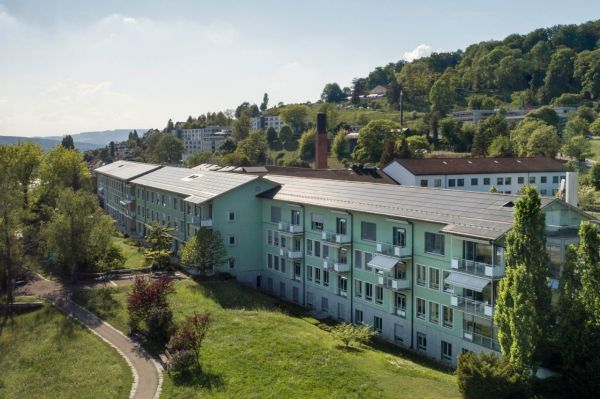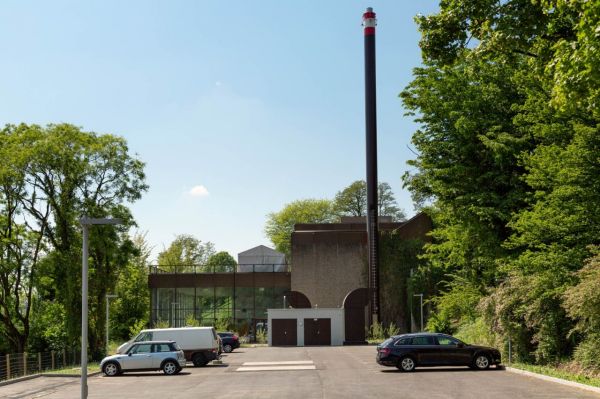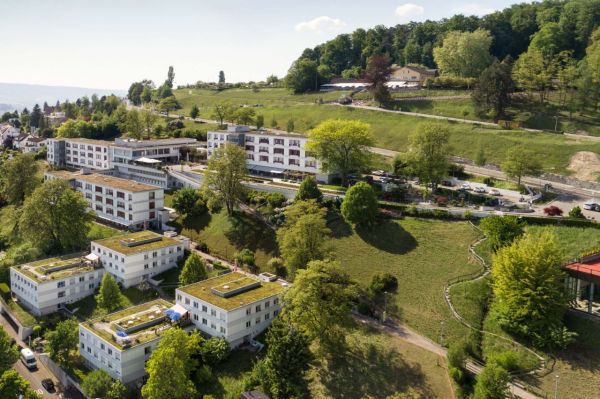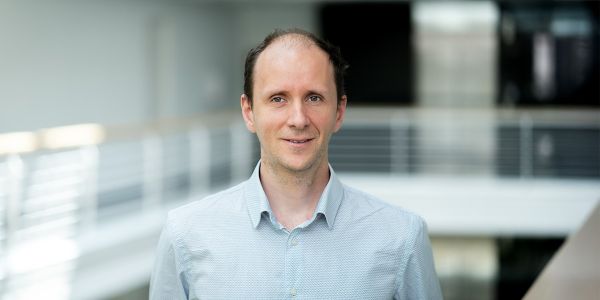- 4,500 MWh of heat required per year (all connected properties)
- 900 tonnes of CO₂ saved per year
Waid city hospital, the local care home, the heated swimming pool and the Käferberg addiction clinic – some of which consist of several buildings – are all connected to our local heating network. We planned it, implemented it and financed it together with the city of Zurich. We will also be responsible for operating it for 30 years.

Efficiency through integration
Before the local heating network became operational, each of the four properties was supplied with heat by its own oil and gas heating system. As this energy supply using only fossil fuels was no longer meeting technical and environmental requirements, the idea was born of combining the properties to form a small heating network. Its operation is not only more efficient, but also significantly more sustainable than the previous individual systems.
The municipal specifications for this were ambitious: 90 per cent of the thermal energy needed be generated in a climate-neutral manner. In 2015, the City Council and City Parliament granted a project loan of more than CHF 8.2 million. The system was completed after just 18 months of construction time.
The core elements of the energy solution are a wood chip furnace, two heat pumps (water/water and air/water) and a large heat storage system (63,500 litres). There is also an oil boiler to cover peak times as well as flexible demand coverage outside the heating period.

Due to the existing infrastructure, the oil-fired heating system was installed in the conventional boiler room at the Waid hospital. The wood chip heating system is used during the winter months. The heat generated by the combustion process is fed into the heat storage system, which supplies the properties with heat for heating, bath water and hot water via district heating pipelines. Between the wood furnace and the heat storage system, the water/water heat pump provides additional heat. During peak demand, the oil boiler is switched between the heat accumulator and the consumers.
- The cooled water flows from the consumers back to the heat storage unit in the heating plant and from there it starts a new cycle via a wood-fired combustion system. Between the consumers and the heat storage system, the water that flows back is heated by the air/water heat pump (which is fed by the room waste heat in the central heating system) and by the exhaust gas treatment system (recovery of exhaust heat from wood combustion). The exhaust gases themselves are purified using a wet electrostatic filter and a water treatment system.
- Excess waste heat from the Waid hospital’s cooling system can also be directed to the heating plant and used to supply the water/water heat pump. This networked system will work in the warm months of the year without the wood chip furnace. Our project manager Matthias Eberle: ‘The two heat pumps (and the oil boilers when there is a short-term increase in demand) provide the customers with enough heat.’
By intelligently linking the consumers and the system components, the plant should achieve its goal of producing the required 90 per cent of thermal energy in a carbon-neutral way. Compared to the old heating systems, it is expected to save around 6,600 megawatt hours of fossil energy per year. The wood chip furnace is also supplied with wood chips from the municipal forest, thus promoting sustainable local forest management.

Replacing (local) heating networks with customised solutions
In cities, there are still countless conventional heating systems that run on fossil fuels in a relatively small space.
‘To create a local heating network, ideally, two or three larger users are needed to start off, for the investment costs to be worthwhile. Connecting lots of other small properties is then easy,’ says our operating specialist Christoph Bleuler.
Cities in particular often have building stock within their infrastructures that could potentially be the first users. They often also have forests that can benefit from sustainable management.






